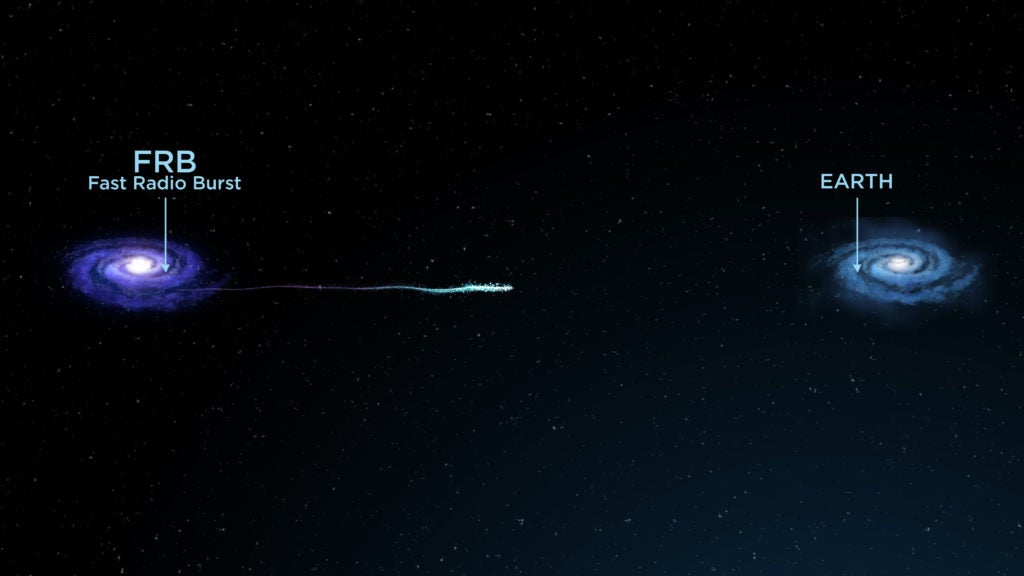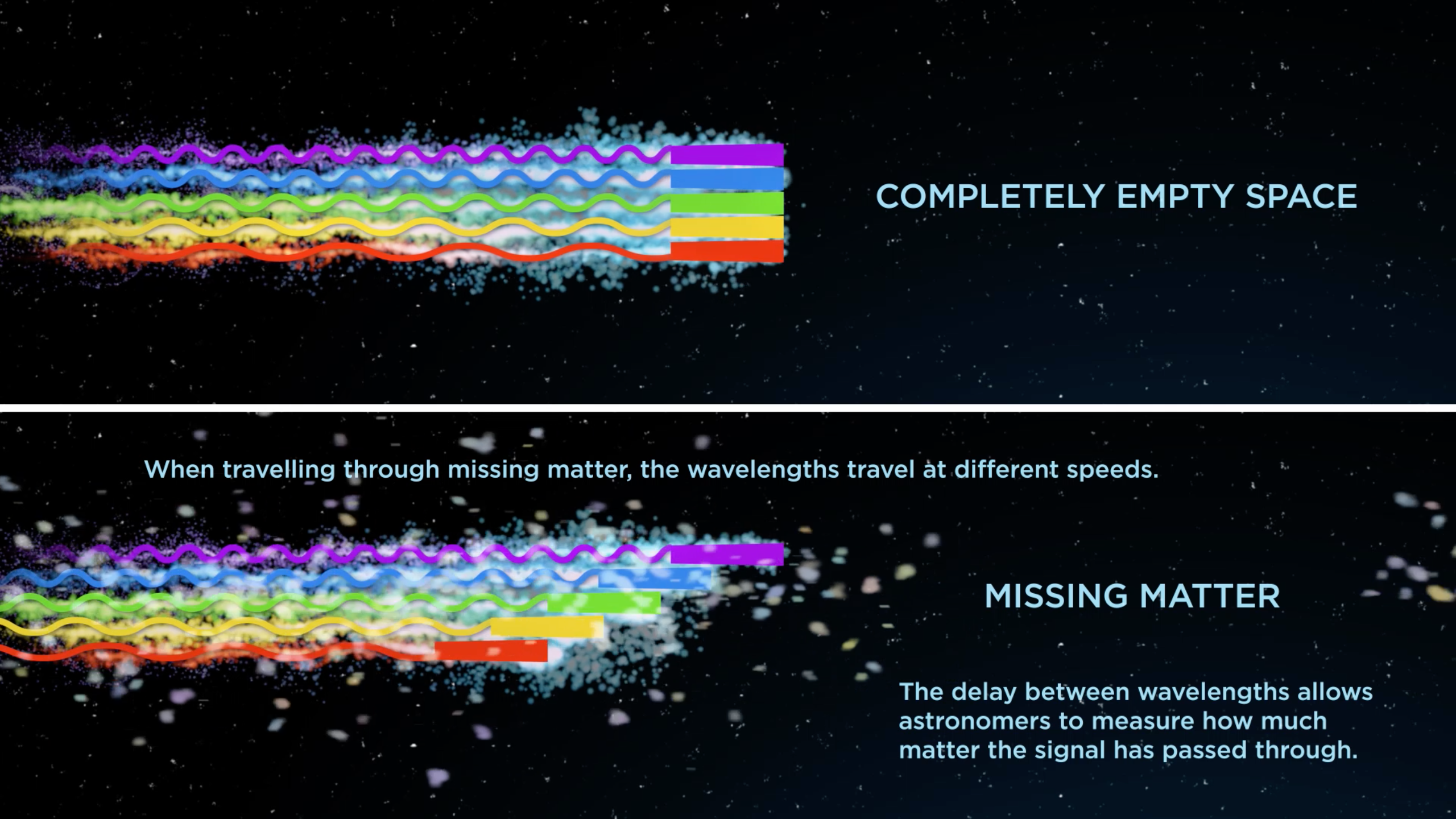
Intergalactic Pulses Solve Mystery of Universe’s Missing Matter
by George DvorskyScientists have spent three decades trying to locate half of all the “normal” matter that’s supposed to exist in the universe. A new paper is claiming to have finally found this missing stuff, in a discovery made possible by measuring incoming fast radio bursts.
“We know from measurements of the Big Bang how much matter there was in the beginning of the Universe,” explained Jean-Pierre Macquart, an astrophysicist from Curtin University and the lead author of the new Nature paper, in a press release. “But when we looked out into the present Universe, we couldn’t find half of what should be there. It was a bit of an embarrassment.”
By missing matter, Macquart is referring to baryonic matter – the kind of matter we can touch and see – as opposed to dark matter, which is another story altogether. Baryonic matter, composed of neutrons and protons, makes up all the stuff we can detect around us, from planets, people, and polar bears through to clouds and iPhones. Theoretical predictions suggest baryonic matter makes up between 4 to 5 per cent of all the stuff in the universe, yet scientists were only able to account for around half of this, in a bookkeeping anomaly of cosmic proportions.
The new paper is claiming to have solved this mystery, finding the missing matter in the depths of intergalactic space, at paltry densities.
“Intergalactic space is very sparse,” said Macquart. “The missing matter was equivalent to only one or two atoms in a room the size of an average office. So it was very hard to detect this matter using traditional techniques and telescopes.”
That the missing matter was found floating in the vastness of the intergalactic medium is not a huge surprise, but scientists hadn’t been able to detect and measure it before. Astrophysicists can now breathe a sigh of relief, as the new “census of baryons,” as the authors put it, is consistent with theoretical models.

Illustration of a fast radio burst (FRB) travelling from its host galaxy to Earth. (Image: ICRAR)
Key to the discovery is a strange celestial phenomenon known as fast radio bursts. First discovered in 2007, FRBs are powerful but brief flashes of energy originating from galaxies far, far away. Scientist still aren’t sure what causes FRBs, nor can they predict when or where they’ll occur, as these pulses appear seemingly at random and last for just a few milliseconds.
We may not fully understand FRBs, but they’re very much real. Importantly, and in a development that made the new discovery possible, scientists are now able to pinpoint the galactic origin of FRBs with tremendous accuracy, allowing them to determine the distance these pulses travel from their point of origin to Earth. The tool that makes this possible is CSIRO’s Australian Square Kilometre Array Pathfinder (ASKAP), a radio telescope located 800 km (500 miles) north of Perth.

Graphical representation of how FRBs were used to detect missing matter. (Image: ICRAR)
Equipped with this capability, Macquart and his colleagues analysed several FRBs to determine how much pushback these pulses received on their way to Earth. The distribution of baryonic matter in intergalactic space may be sparse, but when you travel for millions of light-years, you’re bound to encounter the odd free electron – a smoking gun for the presence of baryonic matter.
As noted in an ICRAR press release, “When travelling through completely empty space, all wavelengths of the FRB travel at the same speed, but when travelling through the missing matter, some wavelengths are slowed down.” This method “determines the electron column density along each line of sight and accounts for every ionised baryon,” noted the authors in the study.
The measured density was a close match to pre-existing estimates for how much matter should exist in the universe. Incredibly, only six FRBs were needed to estimate the baryonic content across the entire universe. Mind blown.
“The radiation from fast radio bursts gets spread out by the missing matter in the same way that you see the colours of sunlight being separated in a prism,” said Macquart.“We’ve now been able to measure the distances to enough fast radio bursts to determine the density of the Universe.”
A similar paper from 2018, in which the researchers studied primordial light from the early universe, also claimed to have accounted for the missing matter. Like the new study, this paper pointed to the intergalactic medium as being the hiding place of regular matter.
Speaking to CNN, astronomer Mariya Lyubenova from the European Southern Observatory said a second observatory, the Very Large Telescope in Chile, was key to the new finding.
“The measurement required the synergy of two very different kinds of telescopes in order to reach a firm conclusion,” Lyubenova, who wasn’t involved with the new study, told CNN. “The distribution of ordinary matter in the universe matters, because it determines the framework in which galaxies, stars, and ultimately planets form.”
As always, it’ll be good to see an independent team replicate these results, but we certainly seem to be getting closer to the truth. You can hide, baryonic matter, but you can’t run from our fancy new telescopes.
Featured image: ASKAP